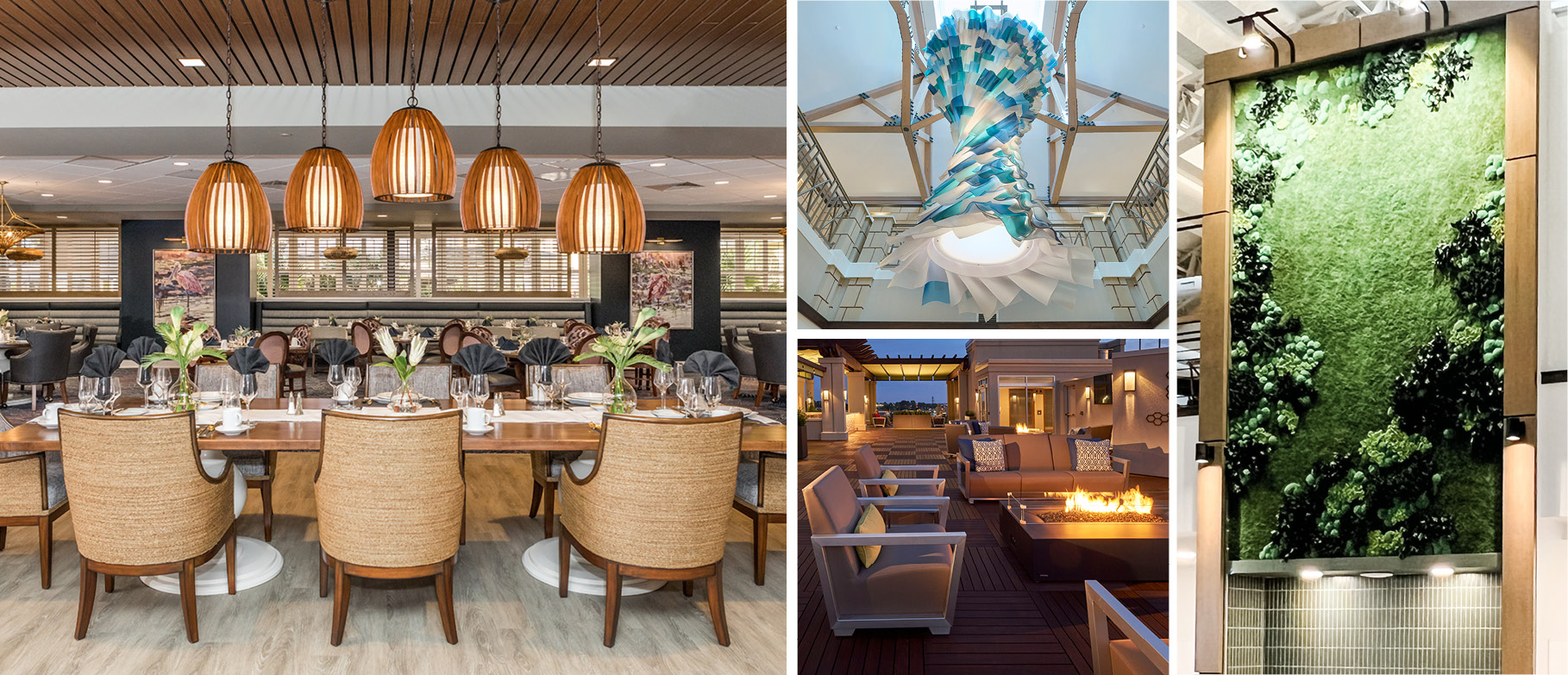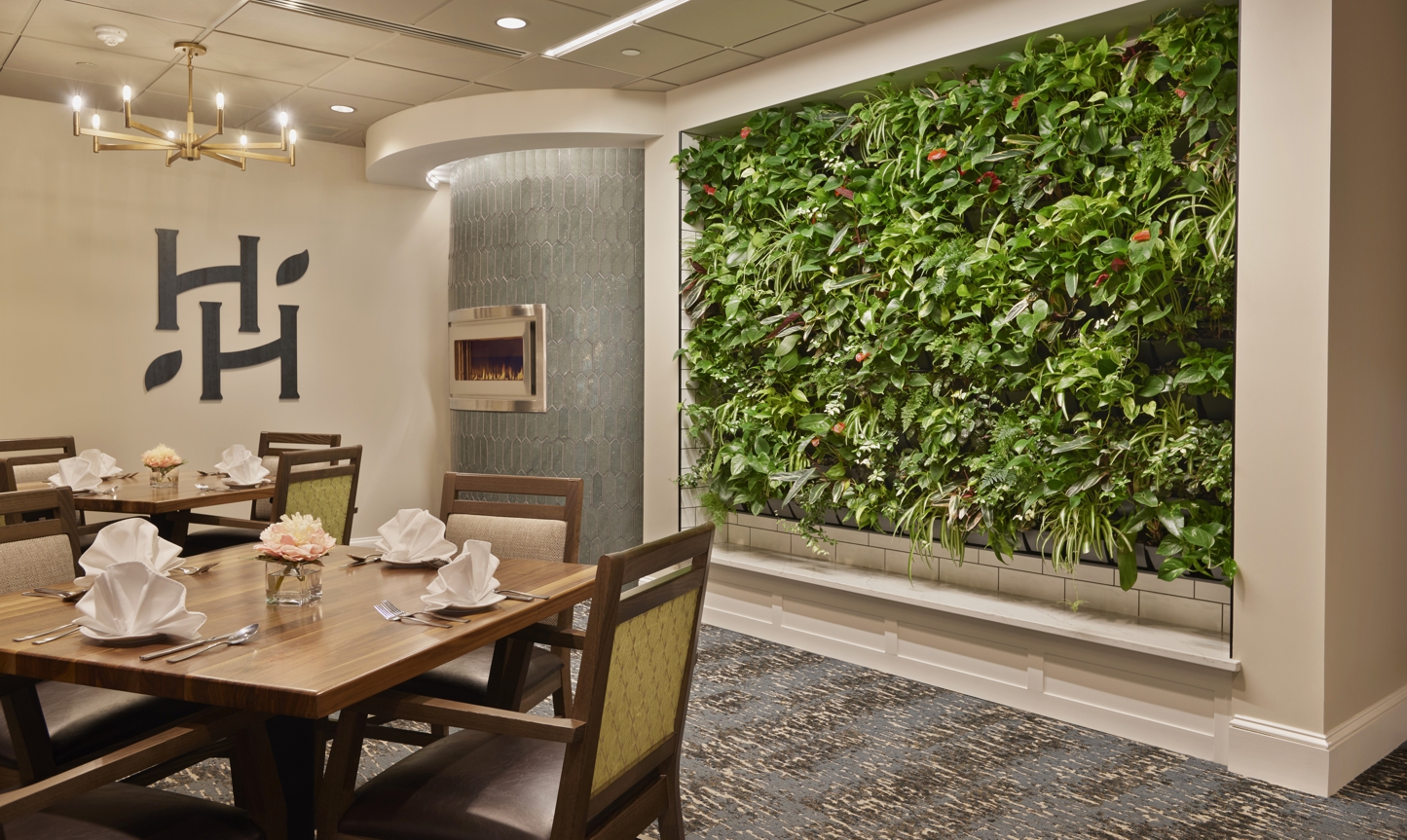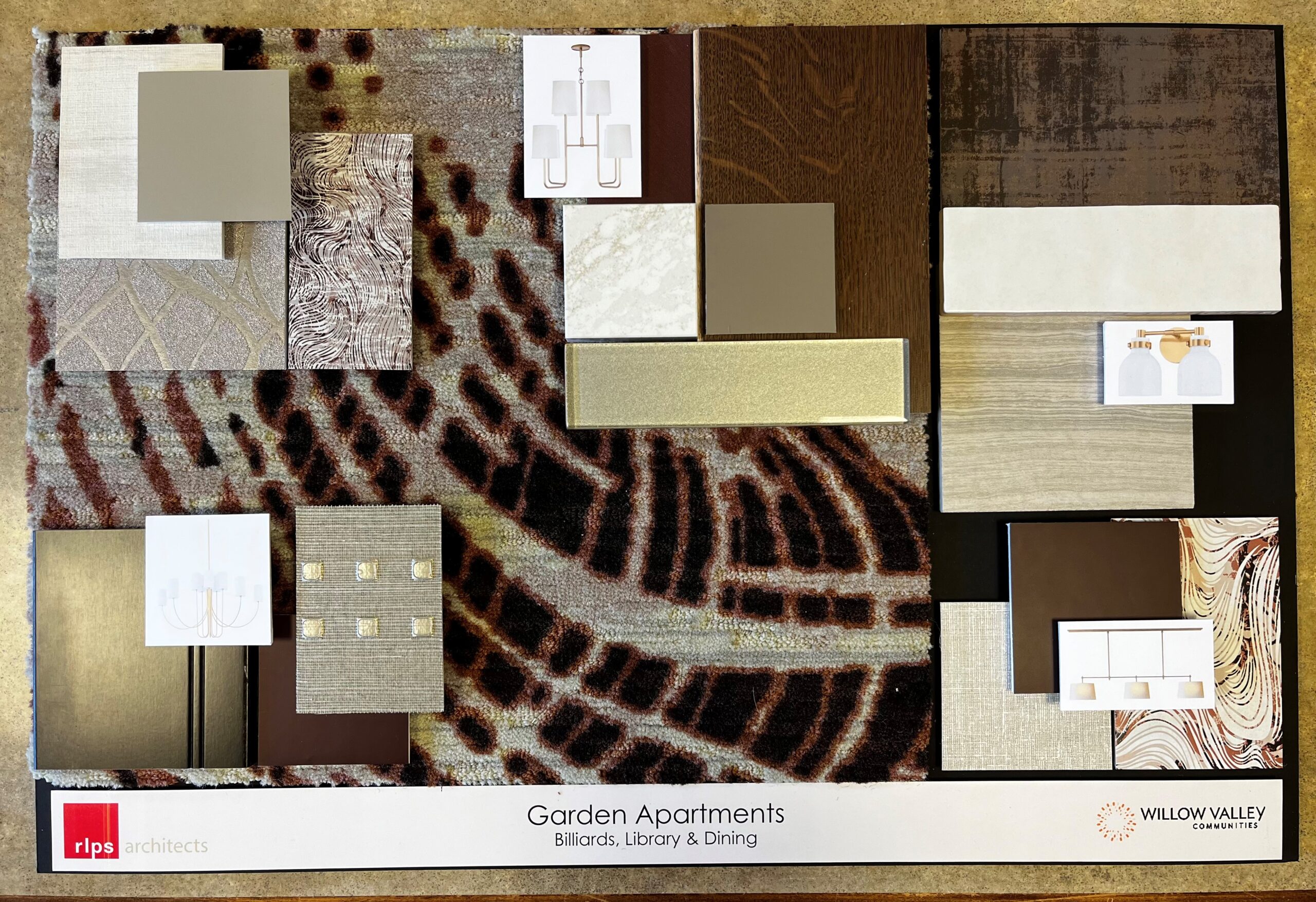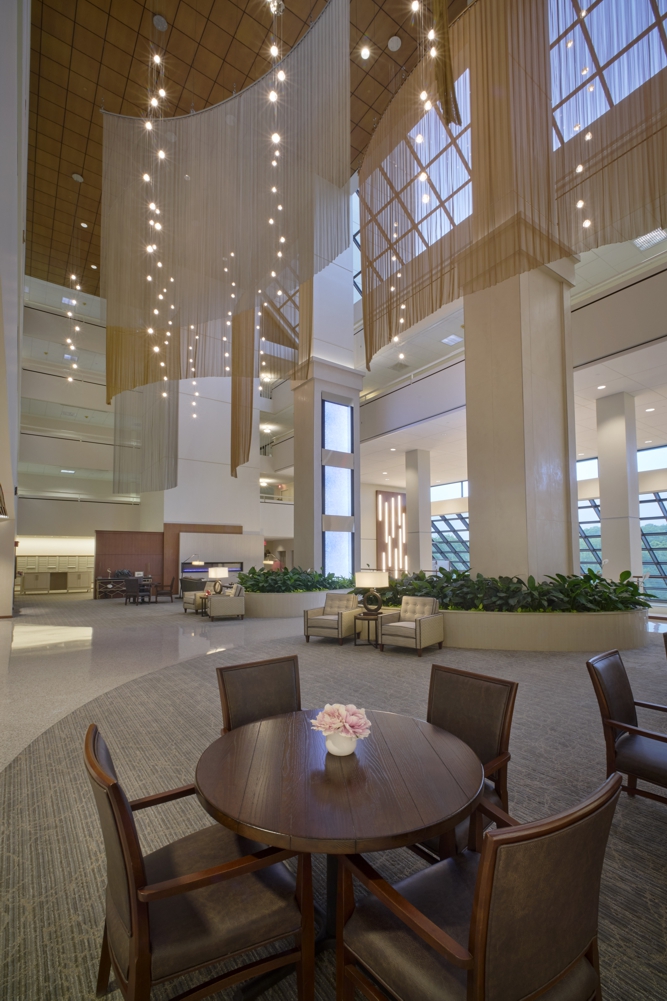Cheers to New Interior Design Trends This Year
January 6, 2023
The start of a new year means there are new interior design trends to explore and incorporate into living, learning and working spaces. The adage “What is old is new again” is a theme woven throughout this year’s interior design trends. These styles put a modern spin on classic ideas while others draw inspiration from the natural world. Vintage-inspired warm colors and natural floral designs appear in textiles, tile, paint colors and wallcoverings. Natural materials, such as the use of wood in caning and woven surfaces, elicit imagery of artisan makers who predate the industrialized production of goods.
We sat down with some of our interior designers to discuss interior design trends and how they are incorporating the trends into their projects.
Natural Materials
One interior design trend for 2023 is the integration of natural materials into spaces. Increasing an individual’s connection to the natural environment through building design is called biophilic design. (See our whitepaper for how this applies to educational environments or our design blog for biophilic design strategies for interior spaces.) Bringing nature inside is achieved through natural objects, colors, textures and patterns inside a building.
Green walls, or living walls, continue to be a popular and beautiful way to incorporate living materials into spaces. Not only are these multifunctional walls a lovely, natural art accent to any room, but they also provide acoustic value in multi-volume spaces, offer fresh herbs and greens to kitchen staff or create a dynamic background for branding signage.

Another way to add natural objects to a space is to choose furniture, accent pieces and lighting made from raw materials. Dramatic marble surfaces are a bold accent choice; large-format thin porcelain panels are a durable and cost-effective way to incorporate this dramatic look. Caning, used on chairs, cabinet fronts and room dividers adds warmth and texture to a space. Woven materials create dividers and light fixtures. Cork wall tiles soften a space both visually and acoustically.
Incorporating natural elements can also be achieved with impressionistic patterns pulled from nature. Wallcoverings, which were popular 30 years ago, have made a resurgence in the design world. Many wallcoverings use flora and fauna designs to accent a room.
Similarly, organically influenced patterns on pillows, carpets, tile and window treatments make a bold, natural statement. There are endless possibilities to incorporating these natural interior design trends into living, learning and working spaces.

Indoor/Outdoor Living
Outdoor living spaces are more popular and highly prioritized since the Covid-19 pandemic. This interior design trend directly complements the use of natural materials in design. Indoor/outdoor dining and social spaces are common, and designers are using large garage doors or a panel wall system to allow for the natural flow of light and air in these spaces.
Within flexible spaces, furniture needs to be durable as it adapts from indoor to outdoor conditions. Lighting needs to be mobile so it can relocate as the space changes. Fabrics and textiles need to absorb more wear and tear from environmental conditions. The thoughtful and purposeful incorporation of these elements creates a welcoming and useful indoor/outdoor space.
Warm Color Palettes

Another interior design trend for 2023 transitions from the use of cool grays to warmer colors. Warm neutral colors have yellow, orange, or pink undertones, such as beige, tan, and gold. These neutral colors are being used as wall paints, fabric finishes and flooring to soften spaces. Gray tiled floors with white walls are being replaced by oak wood flooring with a neutral warm wall color.
An understated way to incorporate this new color palette is the use of accent colors like deep reds, soft corals and rust oranges in accessories, artwork or window treatments. For a more adventurous spirit, the bold use of muted pink, orange and red color families in carpeting while softening the design with warmer neutral walls creates a lasting impression. The 2023 Pantone color of the year, Viva Magenta, is a vivid, warm color that can be used to accent any space.

Dramatic Lighting
In addition to natural materials and warm colors, dramatic lighting that makes a statement through aesthetics and/or functionality is an interior design trend in 2023.
Large scale light fixtures are being used to complement the architecture of buildings. For example, light fixtures define spaces and destinations while creating focal points in open floorplans. Intentionally incorporating lighting fixtures made from organic materials, such as woven textiles, adds warmth to a room. Lighting with gold and brass finishes is a popular way to warm to a room.
Another lighting interior design trend, versatile lighting, serves its intended purpose of providing light to occupants while also functioning in an unexpected way. For example, sculptural lighting acts as artwork in a space. Multi-pendant lighting adds a cascading effect in a large space. Accessory lighting highlights accent walls, branding, and artwork installations all while generating ambiance in a space. Adding dynamic and intentional lighting to a room positively impacts the space.
Student/senior housing and public-facing spaces should be refreshed every few years and completely renovated by year 15, if not well before then depending on the industry. If it’s time for an update, give us a call, our team is ready to help!
Carrie Lehman has been an interior designer for 10 years. She acknowledges that the profession can be unpredictable and challenging but also says it comes with a feeling of reward when a project is completed and the client is happy.
Ashley Sowa has found her 6 years of experience to be extremely rewarding as she has created safe, efficient and aesthetically pleasing environments that make a positive impact on someone’s daily lifestyle and routine.
Liz Haverstick, IIDA, has spent 10 years as an interior designer and enjoys the balance between the design and technical aspects of her profession as well as interior design’s constant evolution.
Laura Peppler, IIDA, has 6 years of experience as an interior designer; she is a dreamer and loves the process of turning dreams into reality.
Blog Editor – Erin Harclerode